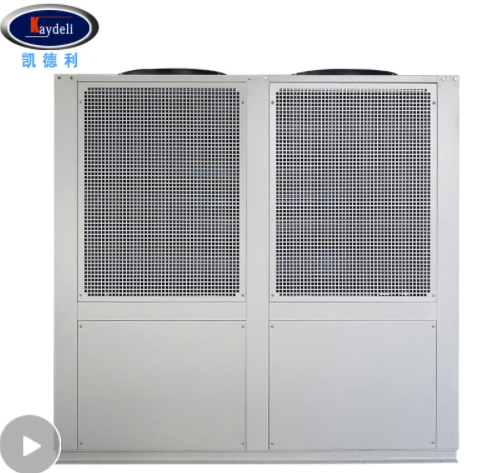We offer you 100% custom-made service Inquiry
The industrial chiller is a cooling system that removes heat from one element (water) and transfers it into another (ambient air or water).
A chiller is a compressor based cooling system that is similar to an air conditioner except it cools and controls the temperature of a liquid instead of air. The other main components to a chiller are a temperature controller, a recirculating pump and a reservoir. Operation and setup are simple. Fill the reservoir with fluid to be recirculated, typically water or an ethylene glycol/water mix. Install plumbing between the chiller and the application and provide power to the chiller. The controller regulates the chiller’s functions. The chiller will provide a stable temperature, flow and pressure once it has been programmed by a user for their individual needs. Harmful particles are kept out of the system by an internal strainer.
A liquid cooling system on casters that can be relocated from one application to another with relative ease. It can be used to cool one or more heat generating devices.
These chillers absorb heat from process water and can be transferred to the surrounding air.Air-cooled chillers are generally used in applications where the additional heat they discharge is not a factor. They require less maintenance than water-cooled units and eliminate the need for a cooling tower and condense water pump. They generally consume approximately 10% more power than a water-cooled unit as a wet surface transfers heat better than a dry surface.
These chillers absorb heat from process water and transfer it to a separate water source such as a cooling tower, river, pond, etc. They are generally used for large capacity applications, where the heat generated by an air-cooled chiller creates a problem. They are also considered when a cooling tower is already in place, or where the customer requires optimum efficiency of power consumption. Water- cooled chillers require condenser water treatment to eliminate mineral buildup. Mineral deposits create poor heat transfer situations, that reduce the efficiency of the unit.

There are a few general rules of thumb to keep in mind when selecting a new cooling system. Keep reading to gain a better understanding of the different chiller types available on the market.
1. Size
Size is one of the biggest factors to consider when buying a chiller. Selecting a correctly sized chiller is paramount. A chiller that is too small won't properly cool your equipment or materials. On the other hand, a chiller that is too large will work just fine, but providing excess capacity will over time fail prematurely due to short cycling. In addition, you’ve spent more money than you needed to. So how do you know what size chiller you need?
Industrial chillers come in a variety of sizes, ranging from ¼ ton to thousands of tons in capacity. We recommend you use a chiller size calculator to determine what size chiller you need for your application. Below are some examples of chiller sizes based on industry standards.
Medical Chillers - 7 ½ ton and 5-ton chillers; or 12 ½ and 15-ton chillers for cooling multiple medical devices simultaneously
Welding Chillers - it's advised to have at least 1-ton of chilling capacity for 100KVA of welder capacity
Winery Chillers - typically, a 2-ton air cooled chiller is sufficient for most winery applications
Waterjet Cutting Chillers - common sizes are 2 and 3 ton
Hydroponic Chillers - sizes generally range from 1.5 to 100 tons
Flower Chiller - sizes range typically from 2-100 tons
Keep in mind that these sizes are only based on industry standards. Manufacturers like Cold Shot Chillers can design and build custom units of virtually any size. We highly recommend using a chiller sizing tool with exact measurements for the most accurate estimation. You can also reach out to our experienced team for additional help with sizing requirements or general questions.
To be continued
By continuing to use the site you agree to our privacy policy Terms and Conditions.